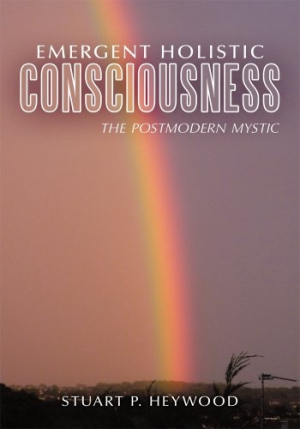Emergent Holistic Consciousness
The Postmodern Mystic
Emergent Holistic Consciousness: The Postmodern Mystic is an exploration of the intellectual and spiritual journey of German philosopher, educator, and scientist Rudolf Steiner, and of the links he posited between science and the spirit.
Steiner did much of his work during the cusp era between the nineteenth and twentieth centuries, a time when science was moving apace in Europe and America, while on another stage, mystical thought (from Asia and elsewhere beyond the Christian world) was enjoying a vogue. Steiner was influenced by the writings of Goethe and later met Nietzsche when that great philosopher was in his dotage. He also encountered lesser known teachers such as the monk Wilhelm Neumann, of whom it was said, “he knows the whole world—plus three villages.”
Steiner built his life upon such connections, famously, for example, aligning himself with the Theosophical Society, with which he parted company to form his own arguably more powerful society. This was all part of his quest for the larger connection between the life of the spirit and the realm of science. He mixed agriculture, education, dance, diet, religion, and lifestyle together in what he termed “Anthroposophy”: the discipline of humans studying humanity.
In Emergent Holistic Consciousness, Stuart P. Heywood, a businessman turned theological scholar, meticulously develops his thesis that Steiner did in fact succeed in his quest: he became the quintessential postmodern mystic, who was able to “formulate ideas that would indicate spirit just as scientific ideas indicate the material.” Heywood’s book is a fact-rich, footnoted text following Steiner from his early childhood to his later more integrated explorations of universal truths and the creation and dissemination of his unique views. Heywood notes that by the time Steiner was thirty-three in 1894, he had written his seminal work, The Philosophy of Freedom, and, to the surprise of his colleagues, began to move “into the more esoteric aspects of spirituality.” Ultimately, Heywood believes that Steiner drew a clear distinction between the “mechanistic mode (modern) mystic” who strengthens himself, and the “Holistic-mode (post-modern) mystic” who surrenders himself to “bring the external world … to objective manifestation.”
Anyone wishing to comprehend Heywood’s ideas should be aware that his book will not be an easy read; this is no spiritual “how-to” laden with familiar concepts. In his introduction, Heywood proposes rigid terminology by which the book is organized, central to them being his term “the mind’s I-consciousness.” Not unlike Steiner, Heywood has invented his own meta-language, and in the interest of conveying the material precisely, employs a rather turgid prose style. He often repeats his introductory terms, emphasizing them with indentations and capitalizations, departing from purely scholarly style and revealing that his zeal for the subject has overwhelmed his academic training.
This is not a book for a student new to the work of Rudolf Steiner. It is for those who have already studied the writings of that great thinker and seek an expansion of their consideration of him through the eyes of a well-informed devotee.
Reviewed by
Barbara Bamberger Scott
Disclosure: This article is not an endorsement, but a review. The publisher of this book provided free copies of the book and paid a small fee to have their book reviewed by a professional reviewer. Foreword Reviews and Clarion Reviews make no guarantee that the publisher will receive a positive review. Foreword Magazine, Inc. is disclosing this in accordance with the Federal Trade Commission’s 16 CFR, Part 255.

